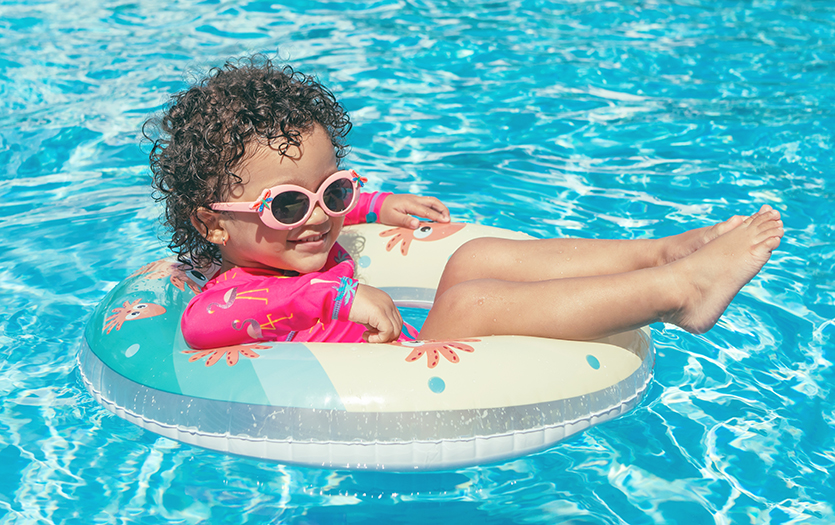
This post was written by Dr. Carey Watson, medical director, Parkview Pediatric Trauma Center.
As we’ve seen in recent years, warm weather can linger in the Midwest up until October. Just because we’re through the height of swim season, that doesn’t mean it’s alright to lapse on water safety. Below, we review the risk and how to stay as safe as possible while swimming.
The risk
The table below shows the number of pediatric drowning cases that Parkview has encountered in the past six years. Although these numbers are low, most of these children do not make it to the hospital in time for intervention or arrive at the hospital too late. Time is of the essence as it only takes a few minutes submerged in water to result in drowning and death.

What to wear
Recommendations for swimwear depend on the location in which the swimming is taking place. In a pool, where the water is clear, it is safer to wear dark or bright-colored clothing that can be seen easier. If you’re swimming in a lake or pond, where the water is not as clear, lighter, brighter colors are better.
Wearing designated swim clothing and swimwear is safer than t-shirts or flowy clothing. The main concern with loose clothing is that it may get caught in drains or other areas (in natural bodies of water) that could impede the ability of a child to get to the surface or a safe location.
However, more importantly, appropriate life jackets should be worn by any child that is unable to swim or who is young enough to not be able to touch the bottom of the body of water. Coast Guard-approved life jackets are a must.
Suits with floatation devices
Suits with built-in floatation, floatation “wings,” floats or other floatation devices used around the waist do not provide the same amount of protection. There is no substitute for a Coast Guard-approved life jacket.
General water safety
The American Red Cross has some wonderful guidance for parents and caregivers, but some of the most important steps are:
- The biggest thing is providing close and constant attention to children when they are in any body of water, even if a lifeguard is present. They should be within arms distance of an adult in the event there is a safety issue.
- Caregivers should avoid distractions, such as cell phones and never leave a child unattended.
- Teach children to always stay away from bodies of water when not with an adult and to always ask permission before swimming.
- Designate a "water watcher" when in a group setting.
- Secure pools and bodies of water with appropriate barriers where possible.
- Put your child in swimming or water safety classes.
Enjoy the water, but make sure you keep your loved ones safe.



